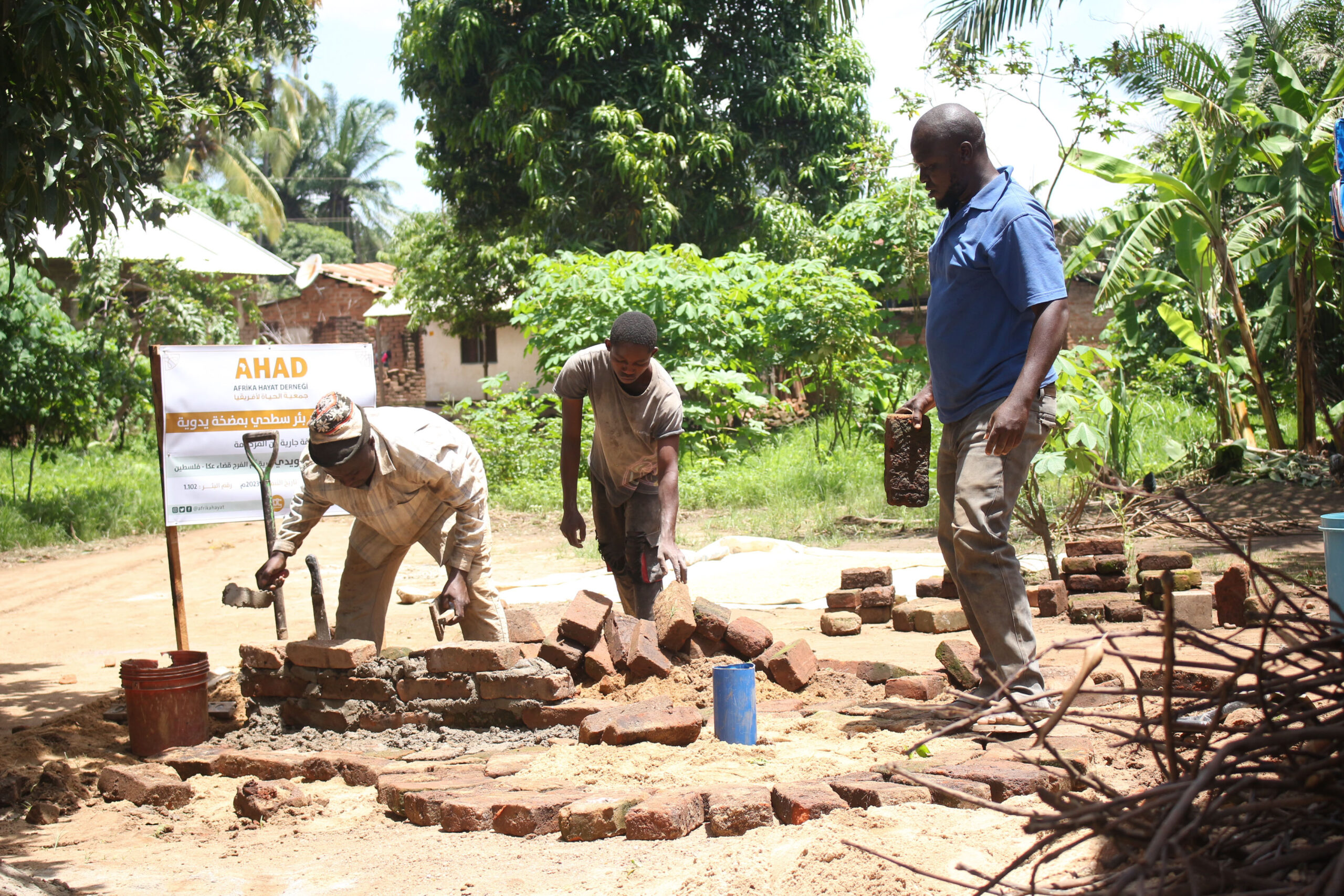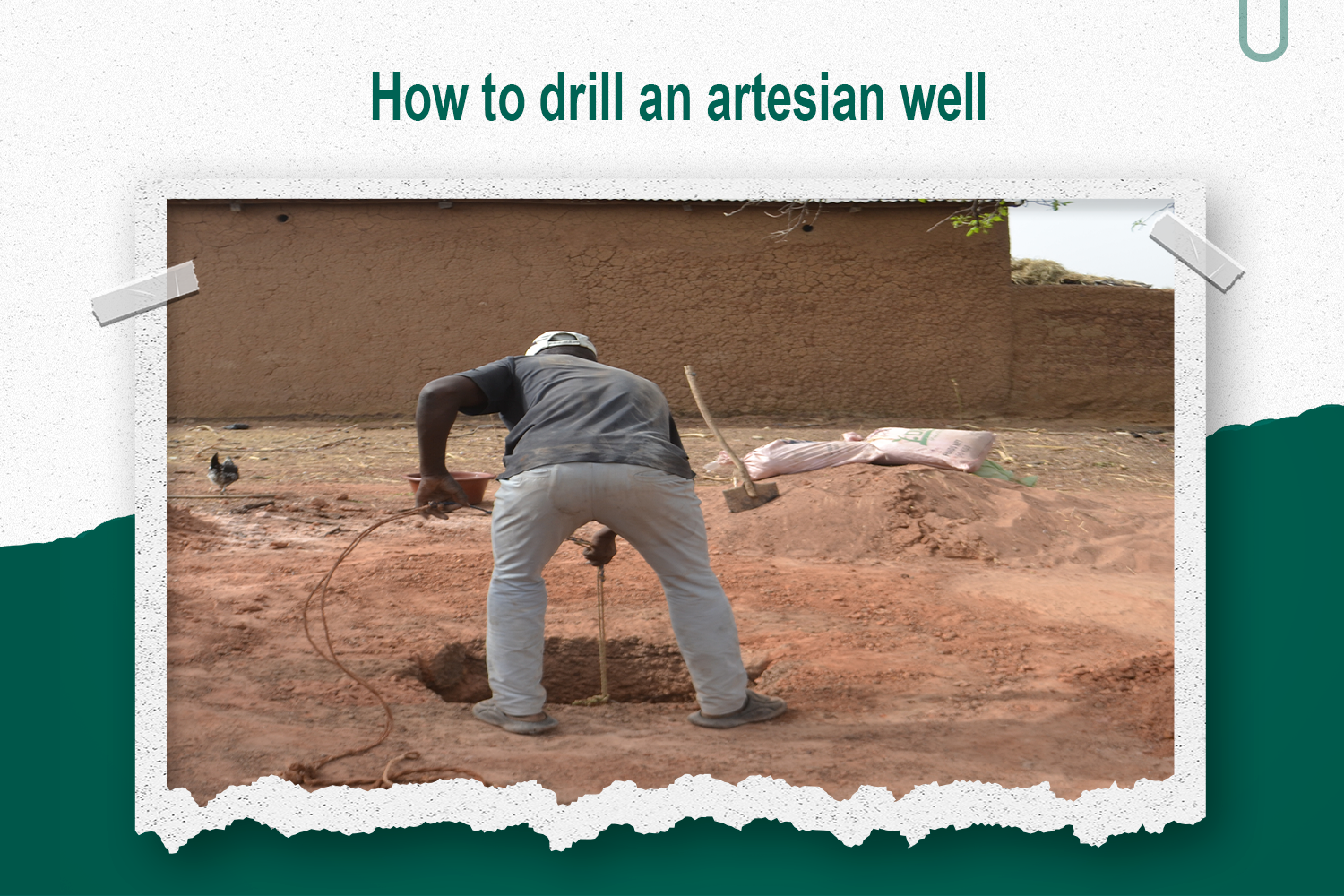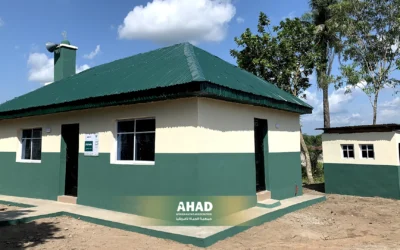How to drill an artesian well
In the world of geology, water does not flow easily in all rock layers. Rocks differ in their ability to absorb water, as some rocks are non-porous and do not allow water to pass through them, while others are porous and are a major source of groundwater.
Non-porous rocks are called “water-impermeable rocks“, while porous rocks are known as”water-permeable rocks”. The latter are considered an essential source of groundwater, since large volumes of water are stored in them, and these layers are also known as “aquifers”.
There are other layers of groundwater trapped in the subsoil, located under non-porous rocks. These layers, through which water may not be able to reach the surface due to high pressure, are called “Artesian aquifers”.
Wells are drilled in these layers to draw water from the subsoil to the surface. Springs and eyes of water are formed when a gap is opened in the non-porous rock layers, which allows water to flow and rush to the surface, and when the pressure is high, Springs and eyes are formed as a result of this rushing flow from the subsoil.
The history of artesian wells, beginnings and development
In the French province of Artois, in 1126, a team of French monks drilled the first recorded artesian well in history. The name of these wells was derived from the name of the province itself, and so they were called “artesian wells”. In that period, the excavation techniques were simple, as the terminal Excavation Technique was used to penetrate the rock layers and allow the water to rise.
Groundwater extracted from such wells is considered a safe source of drinking, as it is distinguished by its purity and cleanliness compared to surface water. This is because they are characterized by a natural purification process as they penetrate porous rocks along their way to the surface, which contributes to ridding them of contaminants.
Artesian well drilling process steps and techniques
The process of drilling artesian wells is a complex one that requires the implementation of multiple stages to ensure that groundwater reaches the Earth’s surface. The following is an overview of these stages:

The drilling process
Three main methods include:
– Caisson method: digging the soil by manual methods.
– Drilling method: drilling rocks using a hard tool.
– Rotary drilling method:use rotary auger to drill Hard Rock.
Packaging process:
They include sheathing the well wall with a strong pipe to strengthen and protect the well, facilitate water transportation.
Pebble casing of the well:
A layer of gravel is laid around the well to filter the water and protect it from sand.
The process of development and development of the well:
They include regular maintenance of the well, including cleaning it and making the necessary updates.
Installation of pumps and pumps:
Pumps are installed and operated to pump water from the well to the surface for general use.
These vital processes contribute to securing and improving the quality of groundwater and ensuring its sustainability as a reliable source of water.

Artesian well drilling techniques from simple to precise
In the process of drilling artesian wells, three different methods of accessing the water of the Hollow are used.
Caisson method:
This method is considered semi-automatic, as it is based on manual digging by simple methods, and is suitable for areas with clay and sandy soils.
The method of percolation or ileum:
A hammer with a sharp tip is used to crack rocks containing groundwater, giving access to pressurized water inside the rocks.
Rotary drilling method (Rotary):
This method is used in areas where the water of the Hollow is accumulated at a great depth. The well is drilled using a rotating head that crushes the material, and it is disposed of using a clay liquid.
These technologies represent a variety of integrated efforts used to ensure the continuity of the existence of groundwater sources and the effectiveness of drilling operations.
Well sheathing: protection and guidance
After the drilling process, the well is sheathed from the inside with a metal or plastic pipe called a well casing. The casing of the well serves to support and strengthen the walls of the well, and is also used as a pipe for pumping water from the well.
The casing of the well does not extend to the end of the well, but ends at a certain position inside the well. After this placement, strainers are installed that help drain the well water and prevent the ingress of impurities to the water intake point.
The process of well sheathing plays an important role in protecting water quality and ensuring the continuity of the process of safe use of groundwater.
Casing the well with gravel casing effectively protects the water source
After the installation of the inner well casing, it is the turn to fill the space between the boundaries of the original well and the boundaries of the metal or plastic casing with a pebble casing. The thickness of this gravel shell shall be at least 3 inches and not more than 8 inches.
The Pebble casing acts as a filter to protect the well from sand entering it, and this is especially relevant if the water-bearing layer has a sandy substrate or fine sand grains of high density.
This step enhances the quality and purity of the water extracted from the well and protects it from contamination with sand, which contributes to securing a reliable source of water for continuous use.
Building wells is a source of ongoing life and charity in Africa
AHAD in Africa is a pioneer in the construction of wells as a running charity with the aim of providing clean and potable water to local communities. The Association identifies areas that suffer from a shortage of water and provides all the necessary possibilities for the construction of the well, starting from the equipment for drilling to the basic materials.
The association pays great attention to ensuring the sustainability of these projects, by providing periodic maintenance and training local communities to take care of Wells. It also provides trained local leaders to effectively manage and maintain the well.
The construction of wells as a running charity is an important part of charity work in Africa, as it contributes to improving the health and safety of local communities and providing a better life. Ahad encourages donors and fans to contribute to these charitable projects to bring lasting benefits to communities in need.
By donating to the poor through the Ahad humanitarian association, we express noble human values and open the door to opportunities to improve the lives of others. The association works with continuous efforts to achieve a positive impact on people’s lives and provide the necessary support to those in need effectively, through its various projects that promote sustainable development and work to build more solidarity and progressive societies.
Let’s all support the efforts of the Ahad humanitarian association, and participate in achieving progress and providing opportunities to needy individuals in society.
You can visit the ahad Association website to find out more about the projects it offers
Related articles:
The importance and bounty of the month of Ramadan
Join us in our message by donating




